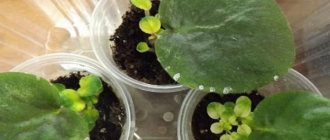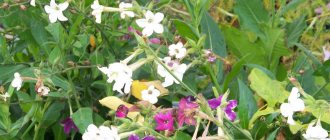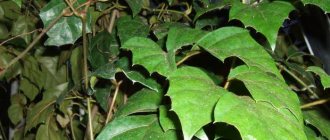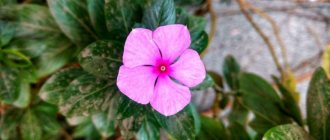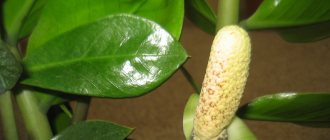Author: Elena N. https://floristics.info/ru/index.php?option=com_contact&view=contact&id=19 Category: Garden plants Published: June 21, 2018Last edits: November 04, 2020
- Watering, fertilizing and replanting
- Pennisetum alopecuroides
Pennisetum grass or pinnately bristleweed (lat. Pennisetum) is a perennial of the Poaceae family. There are from 130 to 150 species in this genus, growing mainly in the temperate climate zones of South America and Africa. The name “pennisetum” is derived from two Latin words that translate as “feather” and “bristle”, and describes the appearance of the inflorescences of representatives of the genus. In the gardens of the middle zone, the pennisetum plant is still an infrequent visitor, since it does not have the cold resistance necessary to survive in our climate. However, the attractiveness of pennisetum contributes to the growth of its popularity among designers and gardeners.
Appearance and characteristic features of pennisetum foxtail
Pennisetum alopecuroides belongs to the large family of Cereals. This herbaceous plant invariably attracts the eye with its abundant paniculate inflorescences. The height of a fairly wide bush ranges from 0.5 to 1 m. The leaf blades are narrow, bright green, and in winter they turn yellow-golden.
Pennisetum foxtail is distinguished by decorative spikelets
Even in winter, the plant retains its decorative appearance as long as the tender shoots are not damaged by snow. It is Pennisetum foxtail that exhibits the greatest frost resistance among other species of this plant.
Abundant inflorescences-spikelets of a brownish color, appearing on the tops of arched or straight shoots, give the plant a resemblance to a flowing fountain.
For reference! The foxtail or foxtail is the most common species of pinnately bristleweed, growing in warm to temperate climates.
Varieties of pennisetum and their characteristics
Hydrangea Vanilla Fraze - planting and care in open ground
The most popular among flower growers are the following varieties and varieties of pennisetum:
- Pennisetum setaceum. Under natural conditions it grows in the African tropics and subtropics, in Arabia. Since this species is quite heat-loving, in climate conditions of mid-latitudes it is grown as an annual plant. The bush can reach a height of 0.7 to 1.3 m. The leaves are narrow and flat, and the paniculate spikelets are loose and drooping. The inflorescences are colored either pink or purple. The variety got its name due to the presence of feathery bristles covering the spikelets. Flowering occurs in the second half of summer.
- Pennisetum glau. This variety is also called pearl millet. It is distinguished by burgundy narrow leaves. Dense dense bushes of the plant can reach a height of 2 m. The flowering period occurs from July to September.
- Pennisetum villosum. The inflorescences of this variety are distinguished by fluffy airy spikelets. Compared to other tall-growing varieties, pennisetum shaggy is quite short - it grows only 50-60 cm. For the climatic conditions of the middle zone, this heat-loving variety is not suitable - it will simply freeze. Therefore, here it can only be grown in containers. But in the southern regions the plant feels excellent.
- Pennisetum orientale. In natural conditions, this species prefers rocky soil, mountain slopes and hills. Its maximum height can be 0.7-0.8 m. The leaves of the variety are folded lengthwise, fluffy inflorescences-spikelets of pink-violet color have long, rough bristles. The variety is very heat-loving, so it is not suitable for cold climate zones.
- Pennisetum simple (Pennisetum incomptum). This frost-resistant variety is not as colorful during flowering as other varieties. However, due to its unpretentiousness, early flowering period and fairly high growth (about 1-1.2 m), the simple pennisetum is also popular among gardeners. It blooms already in June and pleases the eye with its spikelets until September-October.
- Pennisetum rubrum. This variety is distinguished by its purple foliage, which looks especially bright against the background of green herbaceous plants and shrubs.
Pennisetum does not tolerate frost well
What is a mogar plant?
This is an annual herbal plant that reaches an average height of 60 - 150 cm. The seeds are convex oval or elliptical in shape, light yellow, brown, rusty or black. Stems are erect.
Leaves are 20 - 40 cm long and 1.5 - 3 cm wide, lanceolate in shape. The leaf blade is dense. Spikelets are elliptical, ovoid or spherical, 2 - 3 mm. Flowering season August – October.
Traditional Use:
- The grains are used as an astringent and emollient to treat diarrhea.
- The seeds enhance potency, treat indigestion, and help with fever and cholera.
- Decoction and oil from grains is a good tonic.
- In India, the decoction is used topically on the sites of bone fractures.
- External application of the paste helps treat swelling.
- A decoction made from the plant itself is effective for rheumatism to reduce pain.
- The seeds are suitable for treating diabetes.
- When combined with cow's curd, the grain is effective in treating measles.
- A decoction of the mogar plant and acacia Modest bark is used as a tonic or to increase fertility in women and men.
- Used in combination with other herbs to treat dysuria.
- The plant is considered as a cure for bloating.
Features of caring for pennisetum in the garden
Tree hydrangea - planting and care in open ground
The main feature of the penis is its heat-loving nature. Therefore, in mid-latitude conditions, the plant can only be grown as an annual plant. And varieties more resistant to frost will be able to winter in open ground only with additional shelter and in warm winter conditions. This should definitely be remembered when growing this crop.
Important! Pennisetum leaftail reacts very painfully to drafts and sharp gusts of wind, so it is better to plant the plant near buildings or fences that will serve as protection.
Also, do not replant it too often - the plant does not tolerate the procedure well.
Watering
You should not water the pennisetum flower too often: the plant in natural conditions is more accustomed to drought than to excess moisture in the soil.
The best option would be to irrigate in the absence of natural precipitation, keeping the soil moist and preventing moisture stagnation.
The soil
This cereal is not particularly demanding on the composition of the soil. Only the frequency of feeding will depend on its quality. The most important condition for successful cultivation of crops is regular weeding and loosening of the soil.
Feeding
If the plant is planted in rich, nutritious soil, then it will be possible to do without fertilizers.
But on poor soils, to obtain a more decorative appearance, it is better to use liquid complex fertilizers. This needs to be done once a month.
Attention! It is better to apply mineral fertilizers to moist soil after watering or rain.
Decorative use of foxtail penissetum
Cirrus bristlecone is quite actively used by landscape designers in creating plant compositions, especially near bodies of water, where the bushes are the background for other flowers (cotulas, marigolds, etc.).
The grass is ideal for forming living borders and is an excellent frame for park paths.
Together with lavender, stone rose, gray fescue and other flowers, the plant is used to form rocky compositions. Summer cottages are decorated with different varieties of pinnate bristle, differing in shape and color.
Growing Penisetum foxtail does not require much effort. It easily gets used to a new place, grows quickly and does not need watering. Thanks to the density of the bushes and flowering almost throughout the summer, this representative of cereals is ideal for decorating summer cottages and park landscapes.
Features of caring for pennisetum in winter
Oakleaf hydrangea - winter-hardy varieties, planting and care
Wintering pennisetum, especially its heat-loving varieties, is a dangerous business. A tender plant dies if there is insufficient shelter or severe frosts. Therefore, it is left to winter in the open ground only in mild climates and the root part must be insulated.
Pennisetum needs light and warmth
In cooler winters, the plant is grown as an annual. They also practice planting in containers so that with the onset of cold weather it is possible to move the cereal plant to a warm and bright room.
On the issue of insulating plants overwintering in open soil, the opinions of gardeners differ. Some insist that the above-ground part should be cut off at the root and the root system should be insulated using spruce branches, leaves or covering material.
Other gardeners, on the contrary, believe that cutting off shoots for the winter is not worth it, since they will serve as a natural protection against freezing. You just need to cover the shoots with spruce branches or leaves, and last year’s branches can only be removed in the spring.
Propagation by seeds
Pennisetum is propagated using seeds in open ground in mid- to late spring, when the soil has warmed up sufficiently and the threat of night frosts has passed. Since the seeds are quite small, there is no need to deepen them: it will be enough to walk on top with a rake and moisten the soil.
After the shoots appear, they must be thinned out so that there is at least 0.8 m of distance between neighboring plants. To obtain earlier flowering, it is recommended to germinate the seeds in greenhouse conditions and plant them in open ground as seedlings.
The attractiveness of pennisetum bushes lasts until the end of the season.
Soil preparation
The description of the preparatory work required by the soil comes down to careful digging and loosening of the soil.
Note! Pennisetum does not tolerate excess moisture well, so when planting it, you should avoid areas with close groundwater - this can have a detrimental effect on this cereal.
Growing pennisetum from seeds When to plant
Pennisetum pinnasetum seeds photo
Sowing in open ground
Seeds can be sown in open ground in the spring with the establishment of real warmth, when the threat of return frosts has passed (around May).
Dig up the area and level it. Scatter the seeds over the surface - they are very small, you don’t need to dig deep into the soil, just cover them with a rake. Moisten the bed without stagnant water. Thin out the shoots that appear soon, leaving a distance of about 80 cm between individual bushes.
Under favorable conditions, self-seeding is possible. It is advisable to plant the plant along fences, fences, and buildings. To get flowering early, you should grow seedlings of pinnate bristle.
Growing seedlings of cirrus bristle
Pennisetum growing from seeds photo seedlings
We do not recommend purchasing seedlings in containers - in most cases they do not take root well. It is not difficult to grow it yourself.
- Start sowing cirrus bristle in late February-early March.
- You will need loose, nutritious soil: you can use universal soil for seedlings.
- It is better to grow immediately in individual containers, since during transplantation the root system should not be exposed. Peat or plastic cups are ideal - later transfer them along with the earthen lump.
- Place 1-2 seeds in one container, lightly pressing them into the soil.
- Spray with a fine spray, cover the crops with cling film, transparent oilcloth or glass.
- Sprout at normal room temperature, provide bright, indirect lighting.
- Expect seedlings to appear in 7-10 days.
- Ventilate the greenhouse and maintain moderate soil moisture. Then remove the cover.
- Young sprouts will require additional lighting and moderate watering, keeping the temperature within 20-22°C.
Transplant into open ground in May. The height of the plant will be 10-15 cm.
Reproduction by dividing the bush
The propagation method by dividing the bush is used when breeding perennial varietal plants, since propagation by seeds does not make it possible to preserve all the characteristics of the parent plant.
Propagation by division is combined with planting an old bush, the middle of which becomes not very attractive over time.
The bush should be divided no more often than once every 5-6 years. To do this, the dug plant is carefully separated. The side divisions are planted as independent plants, and the middle of the bush is destroyed.
The easiest way to propagate pennisetum is by dividing the bush.
How to propagate Cirrus bristle
There are two methods of spreading this cereal: by seeds and by dividing the roots. We described the seed method above.
You can grow Cirrus bristles from seeds or by dividing the bush.
Propagation by dividing the bush is quite simple. After several years, the plants have reached a significant height, they are carefully removed from the ground and separated. The root ball is cut with a knife. The “delenki” are seated in new places. In addition, this propagation method is especially good for stimulating root growth.
The use of pennisetum in landscape design
Pennisetum is used in a variety of landscape design options. It can often be found in mixborders, along the edges of flower beds, along fences and near houses. The plant also looks great on lawns, rockeries and alpine slides. Tall pennisetum bushes look quite impressive in single plantings near garden and park trees.
Pennisetum foxtail provides a colorful backdrop for flowering shrubs and herbaceous plants. Its fluffy abundant inflorescences bending towards the ground sway when the wind blows and resemble streams of water.
Pennisetum looks impressive in group plantings
It is also possible to create beautiful rocky compositions in which the pennisetum plays the role of a large plant accent. You can also supplement a similar composition with plants characteristic of mountainous areas (juvenile, chistets, stone rose, lavender).
Pennisetum foxtail is a herbaceous plant with colorful spikelets of inflorescences. Thanks to the arched shoots bending to the ground and abundant flowering, this grass is often called fountain grass, since its shoots really resemble gushing streams of water.
Pennisetum foxtail exhibits the greatest winter hardiness among other varieties and varieties. However, in the conditions of the middle zone it must be covered for the winter. Pennisetum foxtail is unpretentious, and planting and caring for it will not cause any difficulties even for novice gardeners.
More about the flower
This crop is prone to the formation of dense turf, reaching a height of 70 to 130 centimeters. Linear leafy narrow plates grow up to half a meter in length. In spring and summer they have a rich green color, and in autumn they are yellow. The straight, hollow stems have a rough surface and the lower part is covered with bristles.
The shape of the dense inflorescences located on the stems is different. They can be cylindrical or in the form of spike-shaped one-sided panicles, colored burgundy, pink, white or pale green. The length of the inflorescences varies from 3 to 35 centimeters. Fluffy bristles add to their effectiveness. Flowers are divided into two types - lush bisexual and underdeveloped staminate. This plant has a vague resemblance to a fountain, which is why pennisetum is also called fountain grass.

